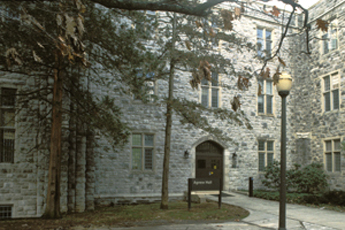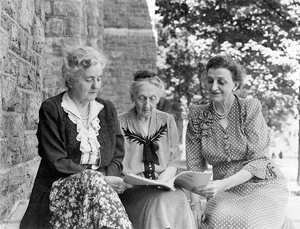 |
|
|
Social dictates of the early 1900s held little sway over Ella Graham Agnew, who blazed her own trails to become "the first woman to" throughout her life. In recognizing her achievements, Virginia Agricultural and Mechanical College and Polytechnic Institute (shortened to VPI -- today's Virginia Tech) blazed its own trail, making a statement about honoring accomplishments regardless of sex. And naming a building for the extraordinary woman gave both the school and Agnew yet another first.
Agnew Hall was erected in 1940, the first building constructed to house the home economics department. Initially, the small, unobtrusive structure was known as the Home Economics Building. In 1949, VPI renamed the building, honoring its most famous woman -- Ella Graham Agnew. It was the first building on campus to be named for a woman. Agnew Hall served the home economics program until 1969. Since then, it has been used by the College of Agriculture and Life Sciences. Today, it houses part of the Department of Biological Systems Engineering (BSE) and the Virginia Tech Pesticide Programs.
Eggleston invited her to "share in the new enterprise" of expanding Extension work to this heretofore ignored population. Agnew accepted and, in 1910, received the first field appointment ever given a woman by the U.S. Department of Agriculture. She began organizing Girls' Tomato Clubs in Virginia, facing, according to Eggleston and famous biographer Douglas Southall Freeman in a letter to the College of William and Mary, "public hostility to 'new-fangled' education, the girls' own distaste for what previously had been servants' work, and the frightfully bad roads over which she had to travel." When Extension moved to land-grant institutions in 1914, Agnew became a VPI employee. Her work continued to expand both in focus and audience, reaching 320,760 women and girls and evolving into today's 4-H and Extension Homemakers clubs. She left VPI in 1919 and held a variety of positions -- including the first woman editor of the home department of the Southern Planter. In 1944, Agnew became the first woman to receive VPI's Certificate of Merit. She returned to VPI occasionally to see the progress of her pioneering work, noting on one occasion, "I rejoice to realize that I had a small share in laying the foundation stones." She died in 1958, six years after receiving an honorary Doctor of Law from William and Mary. A partial spruce-up Part of Agnew Hall will undergo renovation in 2007 to add a BSE unit operations laboratory. Even then, the activities of the building's occupants won't have much to do with Ella Graham Agnew's pioneering work, but as long they plow new ground and make top-notch contributions to the lives of Virginians, her spirit still might smile on them. |


